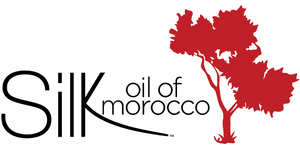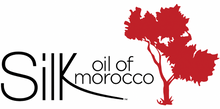Why Does Our Hair Need Protein?
So, you’ve tried the latest hair-food ingredients, you’ve downed all hair tools, and sworn off going outside with wet hair. You’ve tried everything, but there’s still something off.
It’s time to get back to basics. On its most fundamental level, hair is sustained by water and protein. So, almost always, hair health depends on the ratio of these two key composing elements.
Striking the right protein-water balance
If moisture is abundant alongside too little protein, your hair will suffer from hygral fatigue. Otherwise known as having limp, lifeless, and weak hair.
On the other side of the coin, if the scales tip and your hair gets packed full of protein and bereft of water, you’ll experience protein overload. Some notable signs of proteins overload are brittle, dry, and “crunchy” strands.
What protein constructs our hair?
Chains of amino acids fold together to form a structural protein known as keratin. Keratin is not only found as a support system in the hair but throughout our entire body, most notably keeping our nails and skin intact.
Fortunately for our strands, this vital protein is entirely insoluble in water and impervious to reasonably diverse conditions. This, we believe, makes it a perfect material to make up 95% of our hair!
What sets keratin apart?
Keratin is a protective protein that’s less prone to scratching, breaking, and tearing than the other cells or tissues in our bodies. Found in almost every component of the hair, from cuticle to cortex, we owe our hair’s integrity to keratin.
Without keratin, your hair would cease to grow, and every day would become a bad hair day!
What decides how much keratin hair has?
By now, you’re likely quite alarmed about your hair’s keratin levels, and that’s okay! Today, we’re going to learn about the factors affecting hair keratin levels. Read below to find out if you fit the low-keratin bill!
Porosity
Every strand of hair has hundreds of thousands of cuticles that overlap to form a protective barrier around the inner cortex. For some, their cuticles are straight, firm, and overlap each other tightly, resulting in smooth, manageable hair. Others have less reasonable cuticles that leave gaps and breakages between them, exposing the cortex and allowing the hair to absorb and exude moisture more readily. Usually, this cuticle formation is more common among those with ultra-curly, frizzy, and breakable hair.
High porosity means that stressors, moisture, and other pesky outsiders can enter and exit the hair rapidly, depleting and damaging the keratin.
Over styling
Often, harsh chemicals or compromising heat can damage the hair’s protective cuticle layer, zapping keratin levels and essentially leaving parts of the hair protein-less and damaged.
If you regularly bleach, color, or use any chemical-based treatments regularly, you’re likely to have low levels of protein in your hair.
Environmental stressors
Every time you leave your home, your hair enters battle. Think along the lines of pollution, toxic particulates, dust, fumes, and that’s all without mentioning the potentially damaging effects of the weather.
As your locks get swept up in this whirlwind of assailants, its keratin levels will naturally drop, leaving your hair lifeless over the long term.
If you’re a city dweller or live in a region prone to harsh weather conditions, the likelihood is that your keratin levels are lower than they should be.
Telltale signs your hair needs protein
While the above-listed risk factors may predict whether or not you’ll have protein zapped hair, the below are some more surefire ways of knowing for sure:
Elasticity
Hair should be naturally elastic, allowing strands to stretch slightly and contract without breaking. This natural ‘give’ is all in thanks to the bendable yet strong protein content that keeps hair coming back to its natural state.
To test the elasticity of your hair, try the Water Stretch Test. This test includes spraying a few strands of your hair with water before stretching them out lengthwise using both hands. Allow for a steady yet minimal stretch, and then let go while carefully observing the hair. If your hair returns to its base state without breaking, it’s considered sufficiently elastic. However, if the hair does not contract or break – it’s time to look into keratin treatment.
Stringy or limp
Hair that seems to fall from the root and onto your shoulders can be a nightmare. No matter what you try, it simply won’t hold any shape, product, or look alive! If the vivacity and life have gone from your hair, you can bet the protein has as well.
Hair feels gummy
Having mushy, somewhat sticky, almost textureless hair can be unpleasant. It’s most common after harsh or prolonged treatments/styling that can strip the hair of its protein content.
Increased shedding
We typically lose up to 50-100 hairs a day. So if you’ve noticed that you’re losing considerably more hair than usual or are forming bald spots, lack of protein could be your problem.
Note: increased hair loss could be caused by many things such as hormonal imbalance, vitamin deficiencies, stress, auto-immune disorders, medications, and more.
It’s best to consult a professional who can perform a thorough inspection of the scalp before deciding that protein is the main culprit.
What can be done to restore keratin to the hair?
If you think your hair may be lacking in protein, worry not! Fortunately, thanks to your hair’s cuticle layer, it’s always ready to soak up protein from the root right down to the tip. However, depending on the type of hair and how protein-starved it may be, the optimal approach for replenishing keratin levels can vary.
Protein-rich diet
While your hair can undoubtedly absorb protein from the outside, to get a broad coverage, it’s best also to focus within. By adding enough protein to your diet, you can make sure your hair is infused with protein before it even leaves the follicle, supporting long-term hair health.
Whether you’re a full-blown carnivore, vegetarian, pescatarian, vegan, or whatever you so wish - there are hundreds of meal plans and supplements that can help you to consume your fair share of protein.
Keratin Treatments
Using the best…. Silk Argan REP-Hair range uses not only Argan Oil but the Active Ingredient Keratrix - Strengthening & Anti Breakage
While there are several ways to replenish your keratin levels, none quite match up to the potency and effectiveness of Keratin treatment. This reviving, comprehensive treatment offers your hair the dose of keratin it requires to retake shape and fully reclaim its natural glory.
Take Keratrix Anti Breakage Protein, for example. This specialized, multifunctional active ingredient treats the hair to a veritable therapy. Bursting with amino-rich oligopeptides such glutamic, arginine, and aspartic, the element is manufactured to effortlessly mimic keratin.
These amino acids are integrated into a three-dimensional network known as a Matrix Plus. From there, the Matrix essentially sheathes the hair fiber, enveloping the cuticles and exposed cortex in regenerative amino acids. Better still is that the Matrix is composed of durable proteins for a remarkable long-lasting effect that really packs a healing punch! Overall, the hair’s integral protective barrier is fortified, while the cortex is pumped with keratin. The result is improved elasticity, resistance, alongside a soft sheen to die for.
Perfect for all hair types
While Keratrix is specially formulated to re-energize, strengthen and offer lasting protection for damaged or weakened hair, it’s seamlessly compatible with all hair types. Furthermore, the miracle ingredient is cultivated for anti-frizz and ant-humidity action.
The range consists of Silk Oil of Morocco Argan REP-Hair Protein Shampoo, Argan REP-Hair Protein Conditioner, Argan REP-Hair Instant Leave-in Protein Spray, Argan REP-Hair Creme, Argan REP-Hair Protein Masque.

Backed by science
In a study undertaken to test the therapeutic and restorative effects of Keratrix, SEM microscopy was used to closely examine the scope of movement of individual hair following treatment and non-treatment. Observable from the images obtained is that the cuticle softens and gains flexibility following treatment compared to untreated hair.

Once again, putting Keratrix to the test, a further study was conducted to test the water adsorption-desorption kinetics of hair following treatment. Unsurprisingly, the hair regained structure and barrier function, diminishing the typical porosity of damaged hair.

And just in case there were any doubts left, a sample containing bleached hair was treated with Keratrix and shown to be more resistant to breakage than the untreated hair. Crunching numbers: the breaking force increases: • 28.5% vs. untreated hair and 40.9% vs. the bleached / placebo sample.

An Argan Accompaniment
But, what’s the point of sealing the hair with a protective barrier and reinforcing the cuticle if there’s nothing to pad the hair put with? As we’ve gone over before, the protein-moisture balance of the hair is sacred, something that many keratin formulas get wrong. However, this formula shirks the trend, working off a base of ultra-hydrating Argan oil which imbues the hair before being sealed in by the Matrix Plus for lasting, life-giving moisture.







